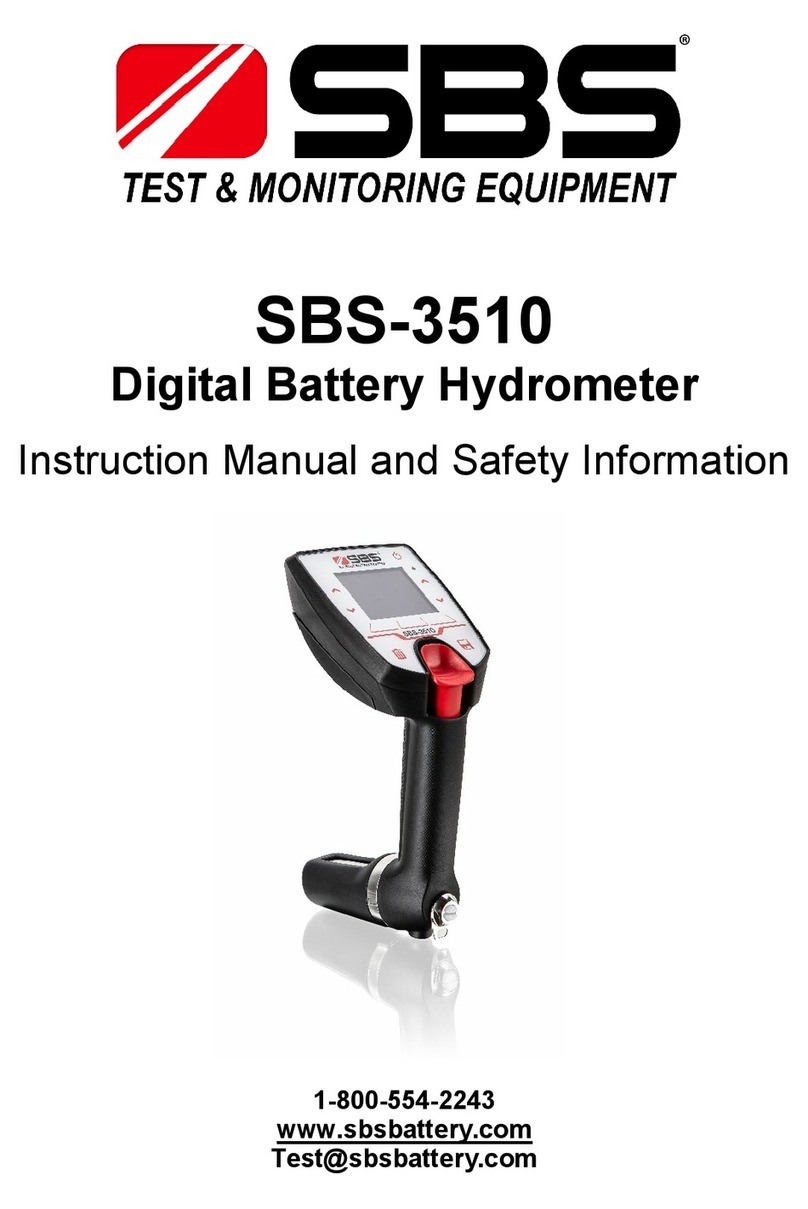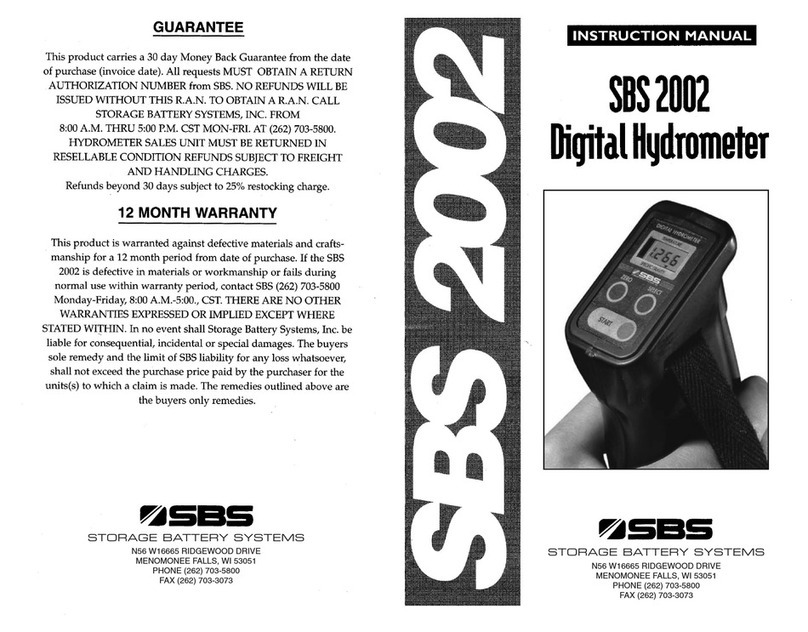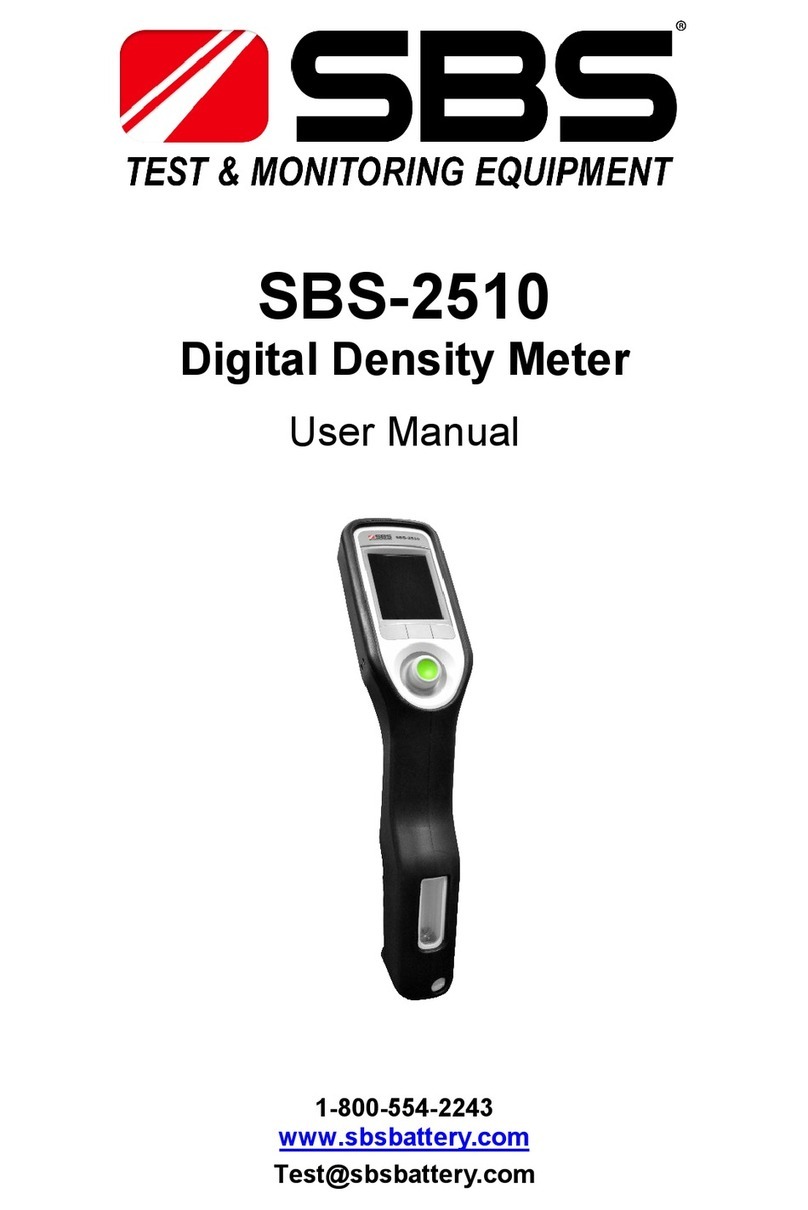
Page 3
SBS-3500 Manual 09-15-TI3500
Table of Contents
1 About the Instruction Manual ..................................................................................................................................5
2 Safety Instructions ....................................................................................................................................................6
3 Measuring Principle ..................................................................................................................................................7
4 Overview of SBS‐3500 Hydrometer ..........................................................................................................................8
5 Checking the Supplied Parts .....................................................................................................................................9
6 Description of the Instrument ................................................................................................................................11
6.1 Front View ................................................................................................................................................................11
6.2 Rear View .................................................................................................................................................................12
6.3 Display .....................................................................................................................................................................13
7 Operating the SBS‐3500 .........................................................................................................................................15
7.1 Connecting the Filling Tube ....................................................................................................................................15
7.2 Attaching the Syringe Adapter ................................................................................................................................15
7.3 Switching the Instrument On ..................................................................................................................................15
7.4 Switching the Instrument Off .................................................................................................................................15
8 Defining the Basic Settings ......................................................................................................................................16
8.1 Language Settings ...................................................................................................................................................16
8.2 Units ........................................................................................................................................................................16
8.3 Sound Settings .........................................................................................................................................................16
8.4 Energy Saving Mode ...............................................................................................................................................16
8.5 Backlight ..................................................................................................................................................................16
8.6 Contrast Settings ....................................................................................................................................................17
8.7 Allocation of the Softkey Function .........................................................................................................................17
8.8 Password Protection ...............................................................................................................................................17
8.9 Date and Time Settings ...........................................................................................................................................18
9 Exchanging Data with a PC .....................................................................................................................................19
9.1 Establishing a Connection to a PC ..........................................................................................................................19
9.2 Exporting Data to a PC ............................................................................................................................................19
9.3 Importing data from a PC .......................................................................................................................................19
10 Performing a Measurement ...................................................................................................................................20
10.1 Selecting the Measuring Unit .................................................................................................................................20
10.1.1 Categories of Measuring Units ...............................................................................................................................21
10.1.2 Calculating a Temperature Coefficient ...................................................................................................................21
10.1.3 Importing Custom Functions ..................................................................................................................................22
10.2 Selecting Measuring Methods ................................................................................................................................22
10.2.1 Entering a New Method ..........................................................................................................................................22
10.2.2 Entering Method Lists .............................................................................................................................................22
10.2.3 Editing a Method ....................................................................................................................................................23
10.2.4 Deleting Methods ...................................................................................................................................................23
10.2.5 Selecting a Method .................................................................................................................................................23
10.3 Assigning a Sample ID .............................................................................................................................................24
10.3.1 Entering the Sample ID ...........................................................................................................................................24
10.3.2 Entering Sample ID Lists .........................................................................................................................................24
10.3.3 Editing Sample IDs ..................................................................................................................................................25








































